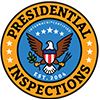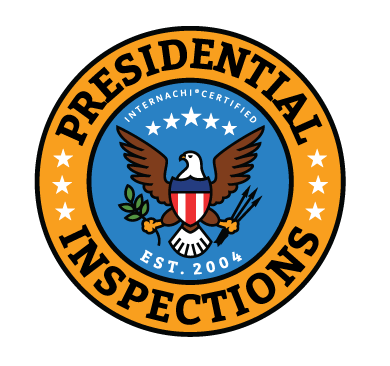Radon Testing and Mitigation
We offer reliable and accurate testing services to ensure that you and your loved ones are safe from this dangerous gas. Radon is a silent killer and a leading cause of lung cancer, but it’s invisible to the naked eye and odorless, making it essential to have your property tested.
Radon is an invisible, radioactive gas created from natural deposits of uranium and radium in the soil. Uranium breaks down to radium, which in turn decays into radon gas. Radon is an inert gas, which means it does not react or combine with the elements in the ground. Because of this, radon can move up through the soil into the atmosphere, where radon is easily diluted and presents little concern. However, when radon enters a building from the soil below, it can accumulate and become a health concern.
Watch the video to learn more about our radon testing procedures.
What causes harmful radon exposure?
Factors such as design, construction, and ventilation of the home can affect the pathways and forces that draw radon indoors. According to a national residential radon survey completed in 1991, the average indoor radon level in the United States is 1.3 picocuries per liter (pCi/L). The average outdoor level is about 0.4 pCi/L. However, not all houses or buildings–even those in the same area or the same neighborhood–have the same radon level. The only way to know if you have a radon in your home is to test for it. Tests should be performed in the lowest lived-in area of the house.
Several studies have been done to determine radon levels in Idaho and different results have been found each time. In 1985 and 1986, state and local health officials screened 1,018 homes for radon. Approximately one-third of the homes had high levels of radon. In 1989 and 1990, Idaho and EPA conducted a joint survey intended to be more representative of the entire state. A two-day charcoal canister test was used by 1,142 homeowners. The results, received in January 1992, indicated that more than 20 percent of the homes in Idaho had high levels of radon. Since 1990, the state radon project has been tracking the number of tests reported in Idaho.
Should I be concerned about radon?
As of August 2005, 6,668 homes have reported results to the project with 37% of the homes testing high for radon. It is difficult to predict which homes may have high radon levels. Homes built side by side, on the same soil or rock, or with similar designs, can have very different radon levels. Therefore, it is recommended that all homes be tested. No level of radon is considered absolutely safe, radon levels in a home should be reduced as much as possible. The amount of radon in the air is measured in picoCuries per Liter of air, or pCi/L. The EPA recommends fixing your home if the results of one long-term test or the average of two short-term tests taken in the lowest lived-in area of the home show radon levels of 4 pCi/L or higher. The higher the radon level, the more quickly you should have your home fixed. If a test indicates an elevated level of radon, reducing the level is usually easy and inexpensive. Sometimes homeowners can do the work themselves, although it is recommended that they seek professional guidance or have the work done by a professional, EPA-certified radon mitigator. However, if you want to do the work yourself, please call the Radon Hotline number to obtain a technical assistance document. There are several methods a contractor can use to lower radon levels in your home. Some techniques prevent radon from entering your home, while others reduce radon levels after it has entered the home. EPA generally recommends methods that prevent radon entry. These systems use a pipe to remove radon gas from below the concrete floor and the foundation before it can enter the home. If you live in an area with high radon levels and are building a new home, you should consider installing radon-resistant construction features. It is more cost-effective to include these features while building a home, rather than fixing an existing home.
Radon Frequently Asked Questions
Installing radon-resistant features requires only standard plumbing, electrical, and construction skills. A caulk gun for sealing is the only special piece of equipment needed. The material required is available at building supply stores.
Aside from the health benefits, are there any other benefits to installing radon-resistant features?
Radon-resistant features promote drainage under a house and can reduce moisture problems. As mentioned in the answer to question #15, they also result in energy savings averaging $65 a year. Building a radon-resistant house is also more visually appealing, as the pipe can be hidden in the internal structure of the house. In retrofitting after construction, it is often more difficult to conceal the pipe.
According to the US EPA, over half a million radon-resistant homes have been built in the United States, mostly in parts of the country with the highest average radon levels. Researchers have found that radon-resistant features lower radon levels to about half of what they would have been without these features.
The US EPA protocols require that all short-term tests be conducted for a minimum of 48 hours. During the tests, all windows and doors should be kept closed and ventilation and exhaust fans should be turned off. Ideally, however, you should do one year-long test or several short-term tests throughout the year to determine the annual average radon concentration.
The US EPA has set an “action level” of 4 pCi/L (picocuries per liter). Levels equal to or above that amount carry enough risk of lung cancer from exposure to radon to warrant action.
According to the US EPA, sealing the foundation is the most time consuming part of radon-resistant construction. The time involved varies from house to house, but is usually just a few hours. This time will be minimized if the house design is simple, with few penetrations in the slab.
The passive radon-resistant features installed in most houses do not cost anything to run. In fact, sealing the home to prevent radon entry can result in reduced energy costs. While the savings will vary with the climate, size of house and utility prices, the national average is $65 per year in energy costs saved. If a fan-based ventilation system must be used, the cost of electricity to run it will average $70 per year. In addition, fans must typically be replaced at 10 to 15-year intervals at a cost of approximately $150 each. The expected energy savings from sealing the house can help offset these costs.
According to the US EPA, radon-resistant features typically add only $350 to the cost of building an average house.
According to the US EPA, many of the features, which make a house radon-resistant, are already used by builders around the country. First, a layer of gas-permeable material (such as gravel) is placed where the house’s slab will be poured. This layer is then covered with plastic sheeting. The concrete slab is poured to minimize cracking, and all floor assemblies in contact with the soil are sealed. Any other places where radon could enter the home are also sealed. The plastic sheeting and sealant block radon’s main entry routes in the house. A length of perforated pipe is installed horizontally beneath the plastic sheeting prior to pouring the slab. This is connected to a vertical, unperforated pipe that extends through the slab and through all floors of the house to vent above the roof. This pipe removes radon from the soil and vents it safely above the dwelling. The gravel beneath the foundation makes it easier for the ventilation system to remove radon, even from the far corners of the foundation. Electrical junction boxes are installed during construction in case a fan is needed to achieve further radon reductions. Normally, suction on the pipe is provided by natural pressure differences within the house. A fan is needed only if the pressure differences cannot lower radon concentrations to acceptable levels.
Although some studies dispute the precise number of deaths due to radon, all the major health organizations (like the Center for Disease Control, the American Lung Association, and the American Medical Association) agree with the US EPA’s estimate that radon causes about 17,000 preventable lung cancer deaths every year in the U.S.
If the home has already been tested, decide whether to accept the test results from the seller or ask the seller to do another test by Presidential Inspections (The buyer cannot legally do a test; only the homeowner can). Perform a long-term test after occupying the home.
If the home has not yet been tested for radon, test as soon as possible, either by the seller or by a licensed tester and the test is done in the lowest level of the home which is suitable for occupancy. Consider including provisions specifying who will conduct the test, what type of test to do, costs, additional escrow money for radon mitigation, etc.
Ready to Get Started?
Contact us for a quote!
Whether you’re looking to buy or sell a residential or commercial property, you need a trusted and reliable home inspector who can provide you with the information you need to make an informed decision.
We offer a range of services to meet your needs, including residential and commercial inspections, mold inspections, radon testing, and pest inspections. You can be confident that we will identify any issues that could impact the value, safety, or health of your property.
Don’t let unseen problems turn into costly headaches down the road – contact us today to schedule your inspection and get the peace of mind you deserve.


